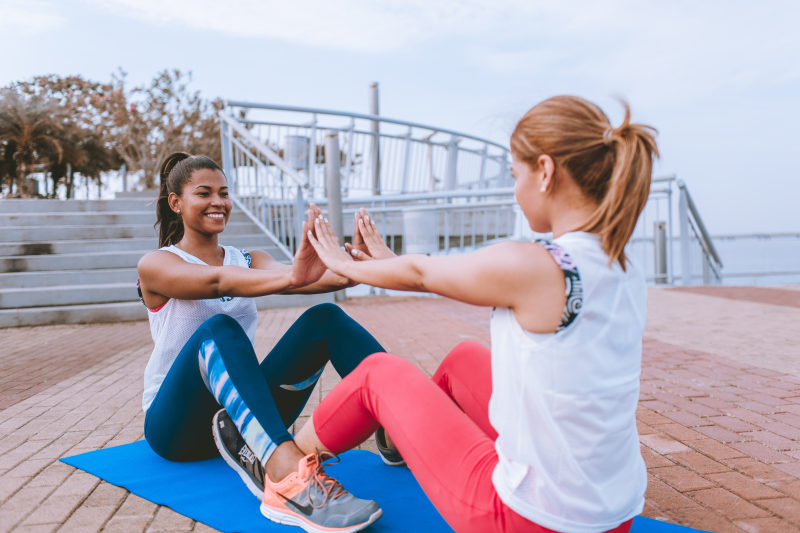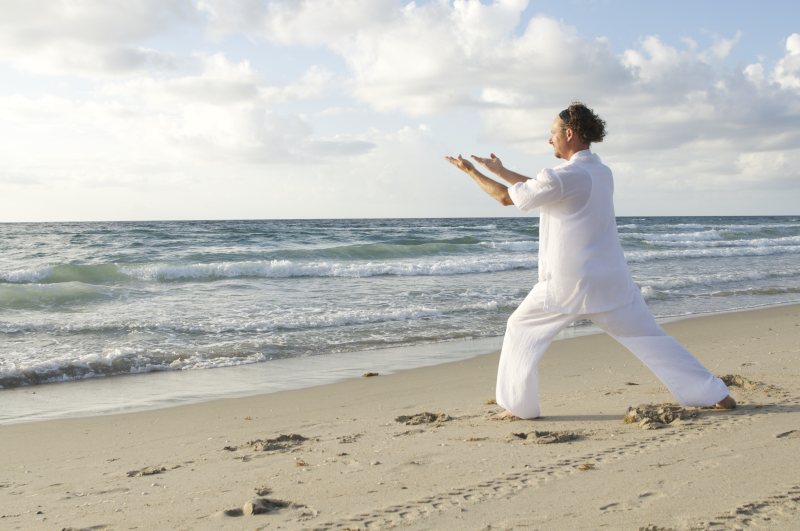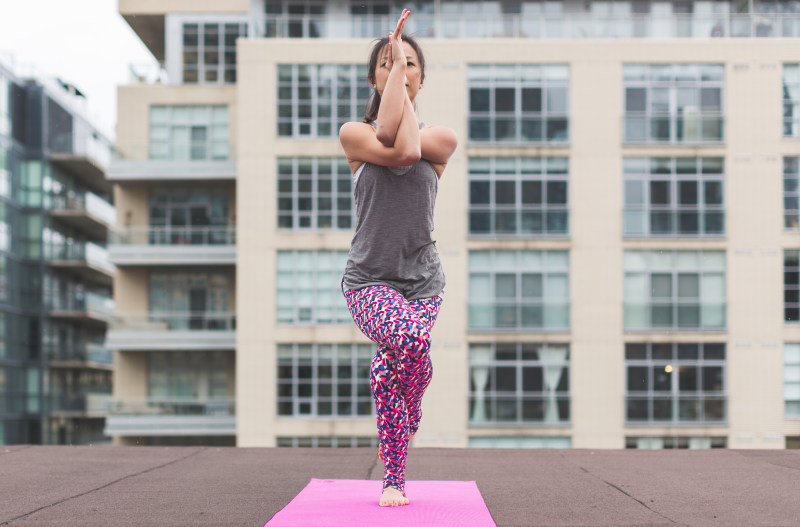There are seven primary forms of yoga: Hatha, Vinyasa, Power, Ashtanga, Bikram, and Iyengar yoga. Hatha is the most common and easiest form of yoga. It combines breathing techniques and basic movements. Vinyasa yoga combines multiple poses that smoothly transition into one another. Power yoga is an intense form, designed to build muscles quickly. Ashtanga is similar to Vinyasa yoga in that it combines multiple poses that smoothly transition into one another; it is unique in that the poses include special breathing techniques. Bikram is a collection of 26 yoga poses designed to be performed in very hot temperatures. Finally, Iyengar yoga utilizes objects like blocks or chairs to align the body in the proper position. In this book, we will focus primarily on the first form, Hatha Yoga.
If you are already a committed practitioner of yoga, you probably will use established routines and will have successfully worked yoga into your life. In that case, you may want to skip the rest of this chapter and go directly to Chapter 3, where we start getting into the nuts and bolts of yoga, the various poses.

Yoga For Any Lifestyle
Is yoga the right type of workout for you? I would assert that yoga can accommodate any lifestyle. There are aspects of yoga that can be implemented in a meeting, on a plane, at your desk, pretty much anywhere. Because yoga doesn’t require special equipment, it is easy to maintain your daily yoga practice when you travel. Even if your life is hectic, you can (and should) introduce yoga into your daily routine, if only for five minutes at a time.
If you already have a solid workout routine, all the better; Yoga can easily be tacked on to either end of your workout. You can regularly practice yoga whether you have a set schedule or one that varies wildly. It makes no difference whether you live in the mountains, on the beachfront, or in between. Whether you live in a studio apartment or a 20-bedroom mansion, you can still find space for yoga! In other words, there’s really no excuse not to include yoga as part of your life. It’s so beneficial, why not give it a shot?
When and Where

If you already have a regular workout routine, you can easily introduce a single yoga position into your cool-down. Use a single pose for several days, before moving on to anything else. This gives your body time to adjust to the new positioning and truly learn its process, which can be more challenging than it appears on the surface.
The “when” and “where” of yoga doesn’t matter as long as it’s consistent. The consistent practice of yoga is what makes it effective. Many people find that waking up a half-hour earlier than usual to incorporate a yoga routine into their lives produces noticeable results.
Yoga is a great way to get your day started. Other people rely on yoga in the evening, claiming it helps them fall asleep easier. Don’t have time to wake up a half hour early? You can also practice yoga at work if your environment allows. Many of the poses can be performed while sitting in a chair. You can execute others while standing, waiting in line, or putting on makeup. The only restriction: do not practice yoga within a couple hours of eating.
To make it easier to practice yoga whenever and wherever opportunity presents itself, I recommend keeping a yoga mat and a set of comfortable workout clothes in your car. You never know when it’ll come in handy
Even though you can do yoga everywhere and anywhere, I recommend that you set aside a comfortable space in your home just for yoga. One of my friends was fortunate enough to have an extra room in her home that she set apart for yoga. Dubbed “The Yoga Room”, it was carpeted, the walls were uncluttered, and the room contained only the items she needed for her yoga work. I found it clean, open, refreshing, and relaxing – the perfect place for yoga. If you don’t have the space to devote a whole room to yoga, you can at least clear a portion of a room – preferably with a wall, as it will come in handy for occasional support.
Your Yoga Plan

The next step is to establish a plan. If you are just beginning to explore yoga, it is important that you enter the practice gently. Your body needs time to ease into the changes you are introducing to it. At the same time, your body needs to experience yoga on a regular basis, so you can begin to discover its benefits in your body, your mind, and your spirit.
A gentle introduction to yoga would be to give yourself five minutes a day to enter into one or two of the poses. Yes, five minutes is all you need at first. Tack it onto one of your existing routines. For example, if you have a set routine you follow for the start of your day, five minutes of yoga added on can help you clear your mind and rev up your body, preparing for action. On the other hand, if you have a series of activities you normally follow before you go to bed (and if you do not, I highly recommend you start), five minutes of yoga can help you relax and can prepare your mind and body for a good night’s rest.
Start with one or two poses that work for you. After a couple weeks, try out another pose or two. As you begin to notice the benefits in the form of greater alertness and flexibility, etc., feel free to expand your yoga time to 10 minutes a day or longer.
Once you reach the point that you are expanding your yoga practice to 20 or 30 minutes at a time, you should consider giving yoga a timeslot of its own. Sure, you can keep yoga for the start or end of your day, but if you find it is cramping your mornings or evenings, feel free to experiment with other times of day. I suggest you continue using one or two yoga positions to help you wake up and to prepare you for sleep; at the same time, give yourself at least three set blocks of time a week to devote to more extended yoga practice.
